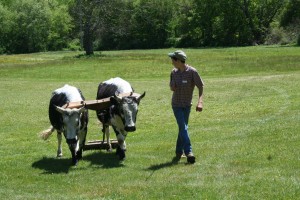An ‘Enormous Market for Agricultural Products”
Connecticut has more than 3.5 million residents and is situated between two major population centers, New York and Boston, providing an enormous market for its agricultural products.

Business entrepreneurs – land and farms, whatever their size – are important to the culture of an interconnected economy. Each well-tended effort can build a business which adds quality to our lives. AGH/MDP
The U.S. Food and Drug Administration (FDA) estimates that nearly half the fruit and a fifth of the vegetables consumed in the United States are grown in other countries. We can make Connecticut a more business-friendly state for its farm families.
These and other intriguing facts and findings are part of a new “Grow Connecticut Farms” report from the Governor’s Council for Agricultural Development. (Head's up to any business in the region because people need to eat and the rich soils of this state and especially the Connecticut River Valley are uncommonly productive if well tended. Assets.)
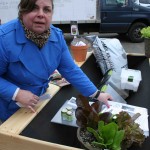

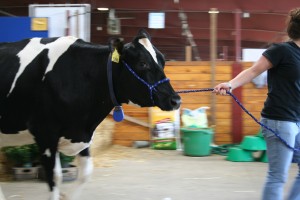 Hot off the press and presented to Governor Dannel Malloy, the pages hold a harvest of the council’s second year of work, a strategic plan for Connecticut’s $3.5 billion agricultural industry, plus 12 recommendations to develop, diversify, and promote agriculture in the state.
Hot off the press and presented to Governor Dannel Malloy, the pages hold a harvest of the council’s second year of work, a strategic plan for Connecticut’s $3.5 billion agricultural industry, plus 12 recommendations to develop, diversify, and promote agriculture in the state.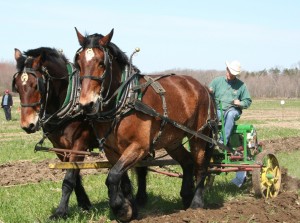
“Farming and agriculture represent about 28,000 jobs in the state and are an important part of Connecticut’s heritage, economy, and quality of life for residents,” said Governor Malloy. 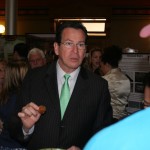 “It’s an industry with real growth potential, and I’m eager to review these recommendations to the Department of Agriculture on ways to realize that potential. In the coming year, I will continue visiting farms throughout the state to see examples of ingenuity and innovation and figure out how we can further encourage and support smart, creative advancement of the industry.”
“It’s an industry with real growth potential, and I’m eager to review these recommendations to the Department of Agriculture on ways to realize that potential. In the coming year, I will continue visiting farms throughout the state to see examples of ingenuity and innovation and figure out how we can further encourage and support smart, creative advancement of the industry.”
The council will host an agricultural town hall meeting at the state Capitol on Wednesday, Jan. 29 to hear more from stakeholders about agricultural infrastructure and wholesale markets, producer education and innovation, food safety modernization, and marketing.
 Findings include: The state-owned, 32-acre Hartford Regional Market is the largest perishable food distribution facility between Boston and New York, and serves as a hub for agricultural products grown and produced both within Connecticut and outside the state. Licensed, inspected processing facilities in which farmers can create value-added products from their produce are not widely available. Commercial kitchens in local churches, VFW halls, and other locations, often suggested to farmers for this purpose, have limitations related to equipment, space, and food-safety requirements.
Findings include: The state-owned, 32-acre Hartford Regional Market is the largest perishable food distribution facility between Boston and New York, and serves as a hub for agricultural products grown and produced both within Connecticut and outside the state. Licensed, inspected processing facilities in which farmers can create value-added products from their produce are not widely available. Commercial kitchens in local churches, VFW halls, and other locations, often suggested to farmers for this purpose, have limitations related to equipment, space, and food-safety requirements.
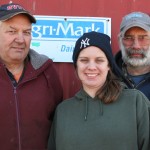 Models to consider to create a bridge for that gap: The Western Massachusetts Food Processing Center is operated by the Franklin County Community Development Corporation. Through a membership structure, it offers kitchen and storage facilities, as well as training and technical consultation, to farmers and other food manufacturers.
Models to consider to create a bridge for that gap: The Western Massachusetts Food Processing Center is operated by the Franklin County Community Development Corporation. Through a membership structure, it offers kitchen and storage facilities, as well as training and technical consultation, to farmers and other food manufacturers.
Rutgers University’s Food Innovation Center, part of the New Jersey Agricultural Experiment Station, provides business and technology expertise to farmers, agricultural cooperatives, retail and foodservice business seeking additional New Jersey grown products, and new and established food manufacturers. 
Public-private partnerships, cooperatives, and other business models for the operation of the processing facilities should be explored. Centrally located, publicly-owned processing facilities would enable farmers to use surplus produce—as well as “seconds,” which now often end up as waste—in value-added products that would provide enhanced, diversified, and year-round income for Connecticut’s farm families.
Farmland is a limited and precious resource, especially in Connecticut, where population densities and real estate values are higher than in most other states. Finding suitable land on which to productively grow crops is a challenge faced by many of Connecticut’s farmers. Connecticut’s Farmland Preservation Advisory Board recommends significant mitigation of state-funded projects that consume cropland and high quality soils. That mitigation consists of the recipient of the state funds permanently preserving prime and important land in the community equal in acreage to four times the acreage of the prime and important soils that their state-funded project converts to non-agricultural use. While these state-supported programs all have merits and provide benefits to Connecticut’s residents, a disconnect exists between them, resulting at times in conflicting outcomes.
For every photo we've taken seen on this page, there is a story and person or family behind it. We believe in entrepreneurs and get-things-done business owners whose dreams are made real and can be seen at farm markets and farm stores, online in Etsy virtual storefronts, on the shelves at your grocery store as well as at fairs, festivals and marketplace events. Business reporting about real life matters and cultivating community to grow connections is a worthy channel for our combined team abilities here at Moo Dog Press Magazine.Listening to people who farm, produce food and goods and cultivate a business and life from the earth continues in 2014.
Read the full report submitted to Governor Malloy – here (as a PDF) Grow Connecticut Farms.




